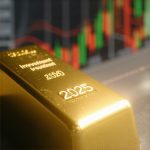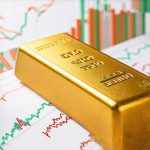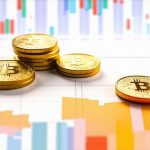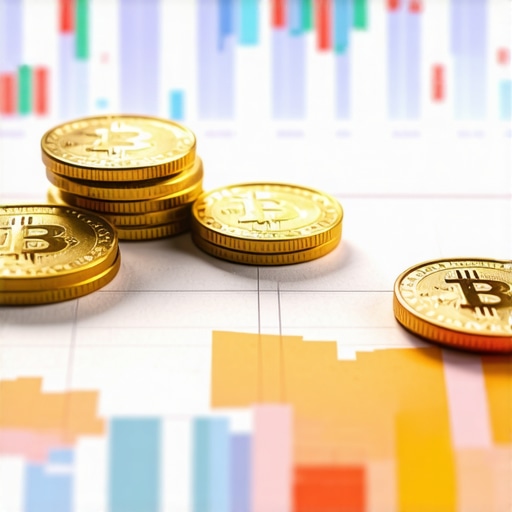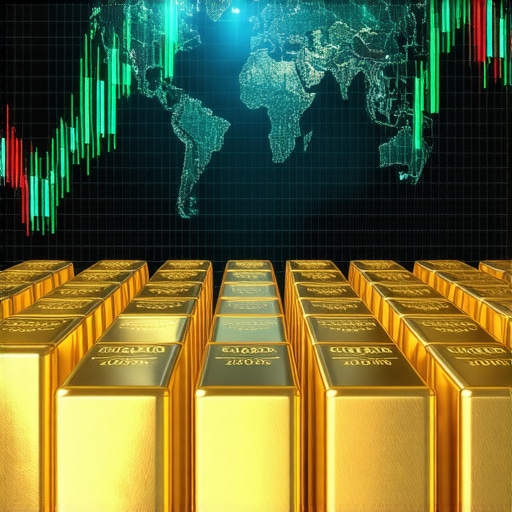When Gold Whispers, Do You Listen? The Subtle Art of Trendspotting
Imagine yourself at a bustling market, the air thick with anticipation, where every trader’s glance and every price tick tells a story. The gold market, much like this vibrant scene, is a living narrative of global economics, investor sentiment, and geopolitical drama. But how do you decode these whispers of gold prices to make smarter investment moves? Buckle up, because analyzing gold market trends is less about crystal balls and more about keen observation, savvy interpretation, and a dash of intuition.
More Than Just Glitter: What Moves Gold Prices Anyway?
Before diving into the data, let’s remind ourselves that gold isn’t just a shiny metal; it’s a financial barometer. Its price dances to the tune of inflation fears, currency fluctuations, central bank policies, and even global crises. For example, when inflation spikes, investors often flock to gold as a safe haven, pushing prices higher. Conversely, a strong dollar might dim gold’s allure. Keeping an eye on these macroeconomic factors offers the first clue in trend analysis.
Is It All Just Numbers, Or Is There a Story Behind the Charts?
Charts are the canvas where gold’s story is painted. Technical analysis—studying price patterns, moving averages, and volumes—can reveal momentum shifts. But here’s the catch: numbers don’t live in a vacuum. A sudden spike might reflect geopolitical unrest rather than pure market mechanics. That’s why blending chart analysis with news on central bank gold purchases or shifts in global demand provides richer insights. For instance, understanding how central bank gold buying influences global demand trends can be a game-changer in anticipating price movements.
Demand, Supply, and the Dance of the Golden Balance
Supply constraints and demand surges often set the stage for price volatility. Gold mining outputs, recycling rates, and physical demand—like jewelry and technology use—each play their part. Did you know that shifts in consumer preferences or industrial demand can tilt the scales? Keeping tabs on gold supply and demand trends is crucial for anyone serious about timing their entries and exits.
Want to Level Up Your Gold Game? Let’s Chat!
So, dear reader, what’s your take? Do you rely on gut instinct, technical charts, or a cocktail of both when sizing up gold market trends? Drop your thoughts, share your favorite strategies, or tell a story about your golden wins and woes in the comments below. Your experience adds rich hues to this ever-evolving narrative.
For those craving a deeper dive into sophisticated trading techniques, exploring the 2025 gold price forecast and key market drivers offers invaluable insights to sharpen your investment acumen.
As the legendary investor Warren Buffett once noted, “Gold gets dug out of the ground in Africa, or someplace. Then we melt it down, dig another hole, bury it again and pay people to stand around guarding it. It has no utility. Anyone watching from Mars would be scratching their head.” Yet, this paradox only fuels gold’s mystique and investment allure today (CNBC on Buffett’s view of gold).
Central Banks: The Quiet Giants Steering Gold Markets
While retail investors often focus on visible market moves, central banks operate behind the scenes, quietly amassing gold reserves that can significantly sway prices. Their strategic purchases or sales reflect broader economic policies and geopolitical calculations. For example, recent trends show many nations diversifying reserves away from traditional currencies toward gold, underscoring a quest for stability amid global uncertainties. Understanding how central bank gold buying influences global demand trends is therefore indispensable for those aiming to anticipate market movements with precision.
Are Emerging Market Demand Shifts Rewriting the Gold Playbook?
Emerging economies, especially in Asia, are reshaping the gold demand landscape. Cultural affinities for gold in countries like India and China, combined with rising disposable incomes, create a potent force driving demand. This surge not only affects physical gold prices but also impacts derivatives and ETFs linked to these markets. Intriguingly, evolving consumer preferences—such as increased interest in gold for technology and green energy applications—add further layers of complexity. Investors who keep abreast of global gold demand trends in 2025 position themselves to capitalize on these dynamic shifts.
How Can Investors Leverage Technological Innovations to Forecast Gold Market Trends More Effectively?
In today’s data-driven world, traditional analysis methods are increasingly complemented by artificial intelligence and machine learning models that synthesize vast datasets—ranging from geopolitical news to social media sentiment. These tools empower investors to detect subtle signals and anticipate price shifts with enhanced accuracy. Yet, the challenge remains: how to balance algorithmic insights with human judgment and market intuition? Thought leaders suggest a hybrid approach, blending quantitative analytics with qualitative expertise, ensuring decisions are both data-informed and contextually nuanced (source: Investopedia on AI in investing).
Integrating Physical and Financial Gold Investments: A Strategic Symbiosis
Investors often debate between physical gold and financial instruments such as ETFs, futures, or mining stocks. Each has distinct risk profiles and liquidity characteristics. However, a diversified gold portfolio combining physical assets for security and financial products for growth can optimize both stability and returns. For a comprehensive approach, referencing guides like how to build a portfolio with gold ETFs and mutual funds can be invaluable. This balanced strategy helps mitigate market volatility while leveraging gold’s unique hedge qualities.
Investing in gold is not merely a transaction; it’s an ongoing dialogue between the metal’s timeless value and ever-evolving market forces. Share your experiences or strategies below to enrich this conversation, and discover more expert insights by exploring gold trading strategies to maximize profits in 2025. Your input helps build a community of informed investors ready to navigate gold’s golden opportunities together.
Decoding Central Bank Gold Reserves: A Hidden Lever of Market Stability and Volatility
Central banks are the silent custodians of gold, wielding influence that often escapes the immediate gaze of retail investors. Their gold reserve management is not just a matter of hoarding; it’s a strategic dance balancing monetary policy, geopolitical signaling, and economic hedging. Recent data from the World Gold Council reveals that central banks have collectively added over 600 tonnes of gold in 2023 alone, marking the highest annual net purchases since the late 1960s (World Gold Council Central Bank Reserves Data).
This accumulation trend is a direct response to rising geopolitical tensions and the quest for diversification away from dominant reserve currencies. For investors, monitoring central bank announcements and purchase patterns offers a predictive edge. For example, a surge in acquisitions by emerging market central banks often precedes increased physical demand in their domestic markets, influencing price dynamics globally.
Algorithmic Insights: Harnessing AI and Machine Learning to Anticipate Gold Price Movements
In an era awash with data, traditional analysis methods are augmented by sophisticated AI-driven models that parse complex datasets—ranging from macroeconomic indicators, trade flows, to social media sentiment. These models employ natural language processing and pattern recognition to identify latent variables influencing gold prices. Yet, as research from Investopedia highlights, the true prowess lies in integrating algorithmic output with seasoned human intuition.
For instance, machine learning can detect anomalies in trading volumes or sentiment shifts ahead of geopolitical events, providing early warning signals. However, overreliance on algorithms without contextual market understanding can misfire. Savvy investors deploy hybrid strategies, where AI tools streamline data analysis while human expertise interprets nuanced implications.
How do geopolitical crises integrate with AI-driven predictions to influence gold price volatility?
Geopolitical events inherently inject uncertainty, traditionally driving gold prices upward as a safe haven. AI models rapidly assimilate breaking news, quantifying sentiment and market reactions in real-time. By correlating historical crisis data with current signals, these models forecast potential volatility spikes. However, unpredictable human factors and policy responses necessitate cautious interpretation. Thus, the fusion of quantitative AI insights and qualitative geopolitical expertise creates a more robust forecasting framework.
Strategic Portfolio Construction: Blending Physical Gold with Derivatives for Optimal Risk-Reward Balance
The gold investment landscape extends beyond bullion bars to an array of financial instruments including ETFs, futures contracts, and mining equities. Each vehicle offers differentiated liquidity, risk exposure, and market sensitivity. Advanced investors often architect portfolios that tactically combine physical holdings—valued for intrinsic security and inflation hedging—with derivatives that offer leverage and tactical positioning.
For example, futures contracts allow for hedging against anticipated price declines or speculating on short-term movements, while gold mining stocks provide leveraged exposure to gold price appreciation but introduce operational and geopolitical risks. Research from BuyingGoldNow.com advocates for calibrated allocations that align with individual risk tolerance and investment horizon, optimizing the dynamic interplay between stability and growth.
Emerging Market Demand: The Cultural and Technological Catalysts Transforming Global Gold Consumption
Asia’s burgeoning middle class, particularly in India and China, continues to drive unprecedented physical gold demand, rooted deeply in cultural traditions and socio-economic aspirations. However, beyond jewelry and investment bars, technological innovation is redefining gold’s role. The metal’s unparalleled conductivity and corrosion resistance are pivotal in green energy technologies, advanced electronics, and medical devices.
Investors attuned to these evolving end-use patterns can anticipate shifts in demand elasticity and supply chain constraints. For instance, increased gold consumption in electric vehicle components may add a structural bullish underpinning to prices, decoupling them partially from traditional macroeconomic drivers.
Next-Level Trendspotting: Integrating Sentiment Analysis and Macro Data for a Holistic Gold Market Forecast
True mastery of gold market trends transcends isolated data points. The most sophisticated traders synthesize sentiment analysis derived from news media and social platforms with macroeconomic indicators such as interest rates, inflation expectations, and currency movements. This multidimensional approach uncovers subtle inflection points that purely quantitative or qualitative methods might overlook.
With the rise of alternative data sources—satellite imagery tracking mining operations, blockchain analytics of gold-backed tokens, and real-time shipping data—investors gain unprecedented visibility into supply-demand mechanics. Incorporating these novel inputs requires both technological adeptness and domain expertise, heralding a new frontier in gold market analysis.
Ready to elevate your gold investment strategies? Dive deeper into expert analyses and tailored market forecasts at BuyingGoldNow.com and join a community dedicated to mastering the alchemy of gold investing.
Bridging AI and Geopolitics: The New Frontier in Gold Market Forecasting
Gold’s allure has always been entwined with global uncertainty, but in 2025, the integration of cutting-edge artificial intelligence with geopolitical analysis is reshaping how investors anticipate price movements. AI algorithms now ingest real-time geopolitical developments—from diplomatic shifts to conflict escalations—translating qualitative events into quantifiable market signals. This fusion helps decode complex cause-effect relationships that once eluded traditional analysis.
Yet, as the Investopedia report on AI in investing cautions, the challenge lies in harmonizing machine precision with human insight. Investors who adeptly blend AI-generated forecasts with seasoned geopolitical expertise gain an unparalleled edge in navigating gold’s volatile landscape.
How Can Investors Harness AI to Navigate Geopolitical Volatility in Gold Markets?
To leverage AI effectively, investors should prioritize platforms that combine natural language processing with sentiment analysis, enabling real-time interpretation of news and social media chatter. By monitoring emerging geopolitical risks—such as sanctions, trade wars, or regional conflicts—AI tools can flag potential price catalysts. However, integrating these signals with contextual knowledge about central bank policies or emerging market demand trends is crucial to avoid false positives.
Central Banks’ Strategic Gold Movements: Beyond Hoarding to Market Signaling
Central banks continue to be pivotal in shaping gold’s trajectory, but their role transcends mere accumulation. Increasingly, gold reserve adjustments serve as strategic signals reflecting macroeconomic confidence or caution. For instance, coordinated buying by emerging market central banks can presage shifts in global reserve currency preferences, subtly influencing investor sentiment worldwide.
Understanding these nuanced movements requires investors to monitor central bank gold purchasing trends and interpret them within broader economic narratives. This awareness can inform timely portfolio adjustments aligned with macro shifts rather than reactive speculation.
Constructing a Gold Portfolio That Balances Tradition and Innovation
In the evolving gold investment landscape, combining physical holdings with innovative financial instruments offers a resilient approach. While bullion and coins provide foundational security and inflation protection, exposure to gold futures and ETFs can enhance liquidity and capital appreciation potential.
Advanced investors often explore strategic allocations that reflect current market dynamics, risk tolerance, and investment horizons. For detailed strategies on integrating diverse gold assets, how to build a portfolio with gold ETFs and mutual funds offers comprehensive guidance to optimize risk-reward balance.
What Are the Emerging Risks and Rewards of Gold Futures Versus Physical Gold in 2025?
Gold futures provide leverage and flexibility but come with higher volatility and margin risks compared to physical gold investment. Futures enable tactical plays on short-term price movements, but require sophisticated risk management and market timing skills. Conversely, physical gold offers tangible security and is less susceptible to counterparty risk.
Investors aiming to maximize their gold strategy should consider blending these assets thoughtfully, leveraging futures for opportunistic gains while anchoring portfolios with physical gold for stability. Explore the ultimate guide to gold futures trading for 2025 profits to deepen your understanding of this complex terrain.
Join the Dialogue: Share Your Advanced Gold Market Insights
How are you integrating AI tools, geopolitical analysis, and diversified gold assets into your investment strategy? Have you observed shifts in central bank behaviors or emerging market demand that changed your outlook? Share your expert perspectives and experiences in the comments below. Engage with a community of sophisticated investors navigating gold’s shifting tides together.
Expert Insights & Advanced Considerations
Central Bank Gold Purchases as Strategic Market Signals
Beyond mere accumulation, central banks’ gold reserve adjustments serve as nuanced economic and geopolitical indicators. Tracking these movements provides investors with foresight into shifts in global reserve currency preferences and emerging market confidence. Understanding central bank gold purchasing trends is indispensable for anticipating major market inflections.
Hybrid AI and Human Expertise: The New Gold Forecasting Paradigm
While AI-driven models can parse enormous datasets—incorporating geopolitical news, social sentiment, and trade flows—their true value emerges when combined with seasoned investor intuition. This hybrid approach enhances prediction accuracy for gold price volatility and trend shifts, making it a cornerstone strategy for sophisticated investors in 2025.
Emerging Market Demand: Cultural Roots Meet Technological Innovation
Demand from Asia’s growing middle class remains culturally driven yet increasingly influenced by technology sectors. Gold’s expanding role in green energy and electronics creates a structural bullish underpinning, diversifying demand beyond traditional investment and jewelry. Investors should monitor global gold demand trends to capture these evolving consumption patterns.
Strategic Portfolio Construction: Balancing Physical and Derivative Assets
Integrating physical gold with ETFs, futures, and mining stocks allows for an optimized risk-reward profile. Physical assets provide security and inflation protection, while derivatives offer liquidity and tactical positioning. Refer to how to build a portfolio with gold ETFs and mutual funds for strategies that harmonize stability with growth potential.
Sentiment and Alternative Data Integration Elevates Trendspotting
Incorporating sentiment analysis from news and social media, alongside alternative data like satellite imagery and blockchain analytics, delivers a multidimensional market view. This synthesis uncovers subtle inflection points that traditional methods might miss, enabling more nuanced forecasts and investment timing.
Curated Expert Resources
- World Gold Council Central Bank Reserves Data: Authoritative source for tracking global central bank gold holdings and purchase trends, essential for understanding macroeconomic influences on gold.
- Investopedia on AI in Investing: Detailed exploration of how artificial intelligence enhances investment analysis, providing foundational knowledge for integrating AI with gold market strategies.
- BuyingGoldNow.com’s Gold Futures Trading Guides: Comprehensive resources such as The Ultimate Guide to Gold Futures Trading for 2025 Profits, offering in-depth tactical insights for leveraging derivatives.
- BuyingGoldNow.com on Global Gold Demand Trends: In-depth analysis at Understanding Global Gold Demand Trends in 2025 synthesizes cultural and industrial demand shifts crucial for forecasting.
- BuyingGoldNow.com Portfolio Construction Strategies: Expert advice on creating balanced gold portfolios via how to build a portfolio with gold ETFs and mutual funds, emphasizing risk management and diversification.
Final Expert Perspective
Gold market analysis in 2025 demands a sophisticated fusion of macroeconomic understanding, AI-enhanced data analytics, and nuanced geopolitical awareness. Central bank activities, emerging market demand, and technological innovation collectively shape a complex investment landscape. Success lies in harmonizing traditional physical gold holdings with dynamic financial instruments, guided by both quantitative tools and seasoned judgment. For those committed to mastering this terrain, engaging with expert resources and ongoing dialogue is paramount. Share your advanced insights or explore curated strategies at BuyingGoldNow.com—where gold investing meets expertise and innovation.


